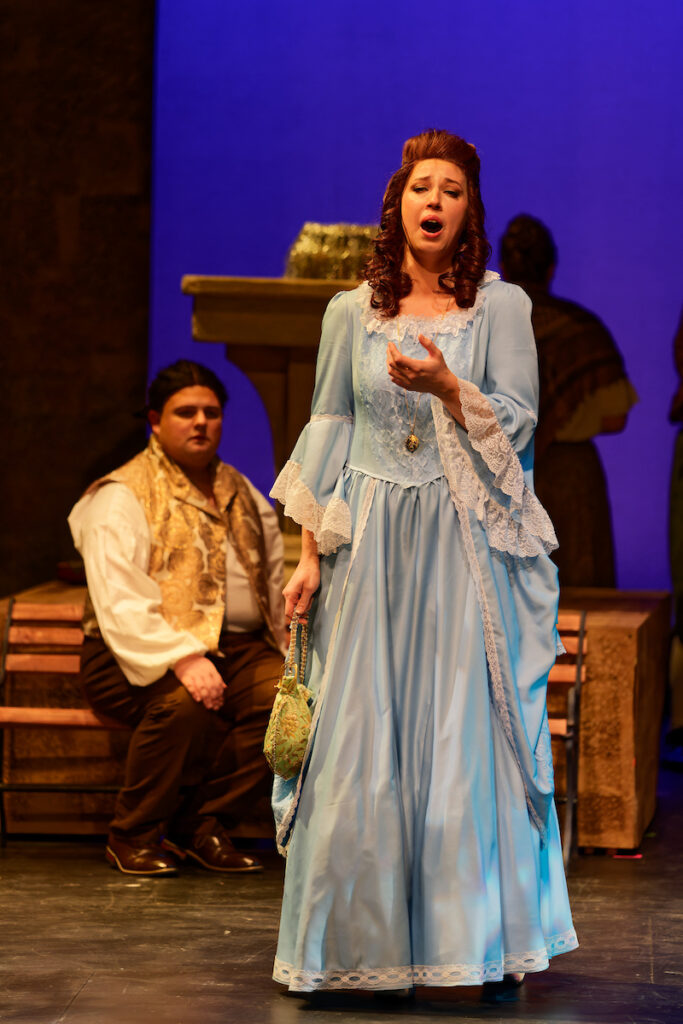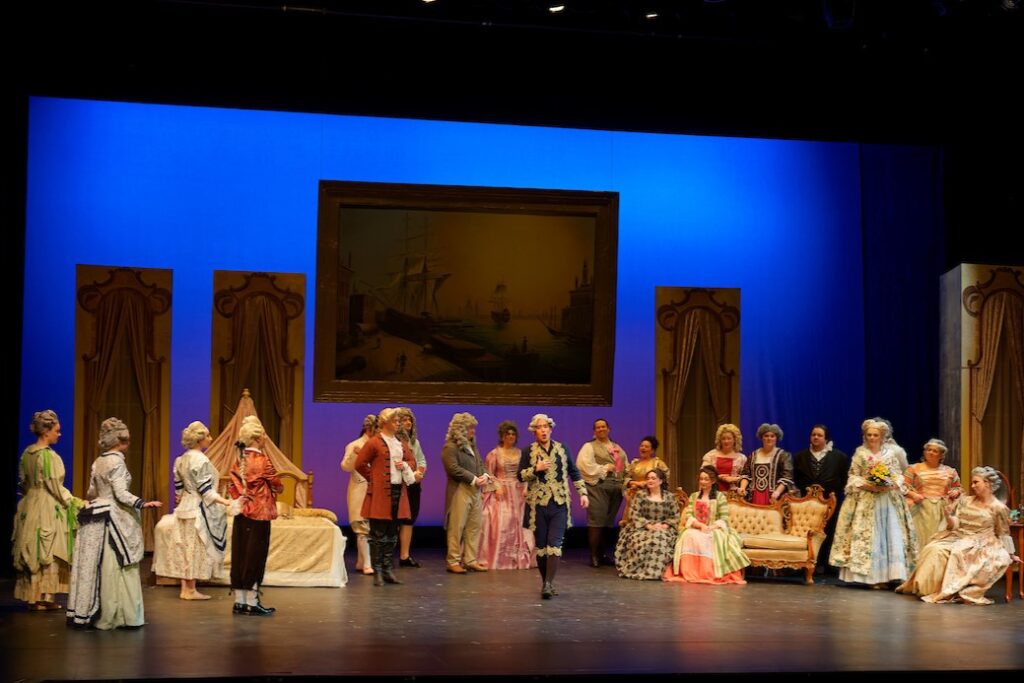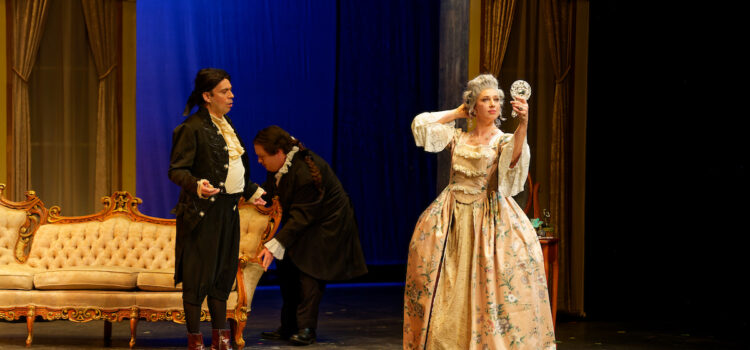By C.B. Adams
Giacomo Puccini’s first outstanding success was “Manon Lescaut,” the musical setting of Abbé Prévost’s renowned (and banned in France) novel’s tale of love, desire and betrayal set against the backdrop of 18th-century France and Louisiana. Premiering in 1893, this opera marked Puccini’s initial triumph and remains a timeless testament to his melodic mastery.
Winter Opera, under the direction of Gina Galati, continued to enchant audiences in its 17th season with its own captivating rendition of “Manon Lescaut” on January 19 and 21. I have it on good authority this is the first staging of “Manon Lescaut” in St. Louis, though I can’t confirm that. But, even if it has been stage in St. Louis, it’s been a long, long time.
Puccini’s daring adaptation of the story underscores his commitment to infusing the narrative with genuine Italian passion. Despite the familiar theme of a classic love triangle, the richness of Puccini’s musical language elevates the emotional depth of the plot.
This production boasts exceptional vocal performances, notably Zoya Gramagin and Taylor Comstock, who breathe life into the titular characters of Manon Lescaut and Chevalier des Grieux, respectively. Gramagin’s soprano effortlessly commanded attention, imbuing Manon with a poignant blend of vulnerability and strength. Comstock’s powerful tenor captured the fervor of des Grieux’s ardor, soaring to majestic heights in moments of impassioned pleading.

Joseph Park’s portrayal of Geronte, the wealthy older suitor, exuded a commanding presence complemented by a rich bass that added depth to the ensemble. Jonathan Stinson’s rendition of Manon’s brother, Lescaut, provided robust support to the narrative, while the ensemble cast delivered a varied tapestry of emotions—from merriment to despair—with finesse.
Under the baton of Edward Benyas, the orchestra delivered a seamless fusion of music and drama, guided by Geovonday Jones’s meticulous stage direction. Scott Loebl’s scenic design evoked the opulence and desolation of 18th-century settings, complemented by Michael Sullivan’s evocative lighting. This achievement was especially noteworthy considering the company’s modest budget for two performances (three if you count the dress rehearsal).
Jen Blum-Tatara’s costumes and Laura Skroska’s props enhance the production’s authenticity, transporting audiences to a bygone era.
Despite occasional inconsistencies in the libretto, Winter Opera’s production shines through its musical performance and cohesive direction. The company’s commitment to staging lesser-known works should be commended because it offers audiences a chance to discover/rediscover operatic gems like “Manon Lescaut.”
Winter Opera’s rendition of “Manon Lescaut” is a testament to the enduring allure of Puccini’s music. With satisfying performances, meticulous direction and lean-yet-evocative production values, this production should make a lasting impression on audiences and continue to warm local opera-goes in during the colder months.


CB Adams is an award-winning fiction writer and photographer based in the Greater St. Louis area. A former music/arts editor and feature writer for the St. Louis Globe-Democrat, his non-fiction has been published in local, regional and national publications. His literary short stories have been published in more than a dozen literary journals and his fine art photography has been exhibited in more than 40 galley shows nationwide. Adams is the recipient of the Missouri Arts Council’s highest writing awards: the Writers’ Biennial and Missouri Writing!. The Riverfront Times named him, “St. Louis’ Most Under-Appreciated Writer” in 1996.

